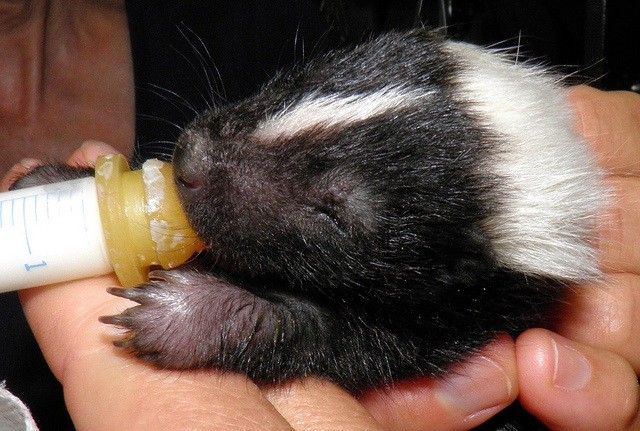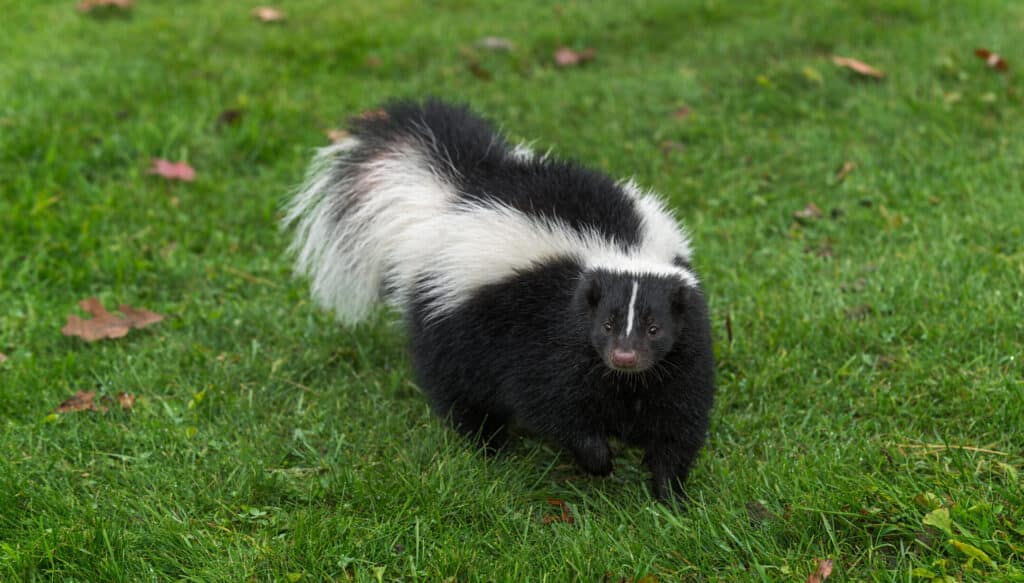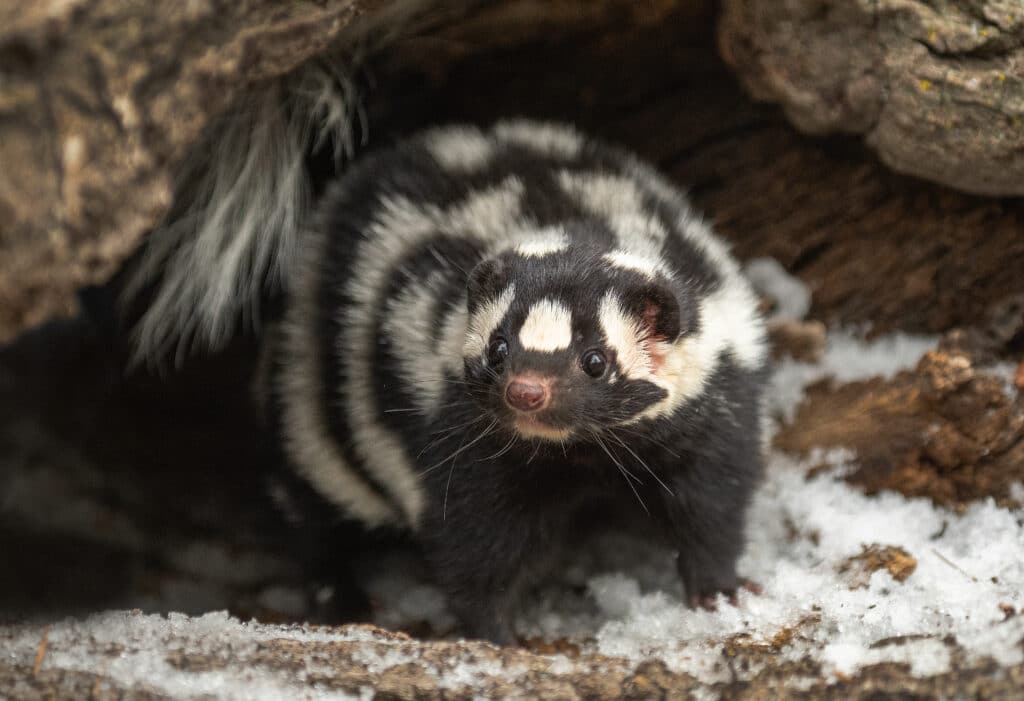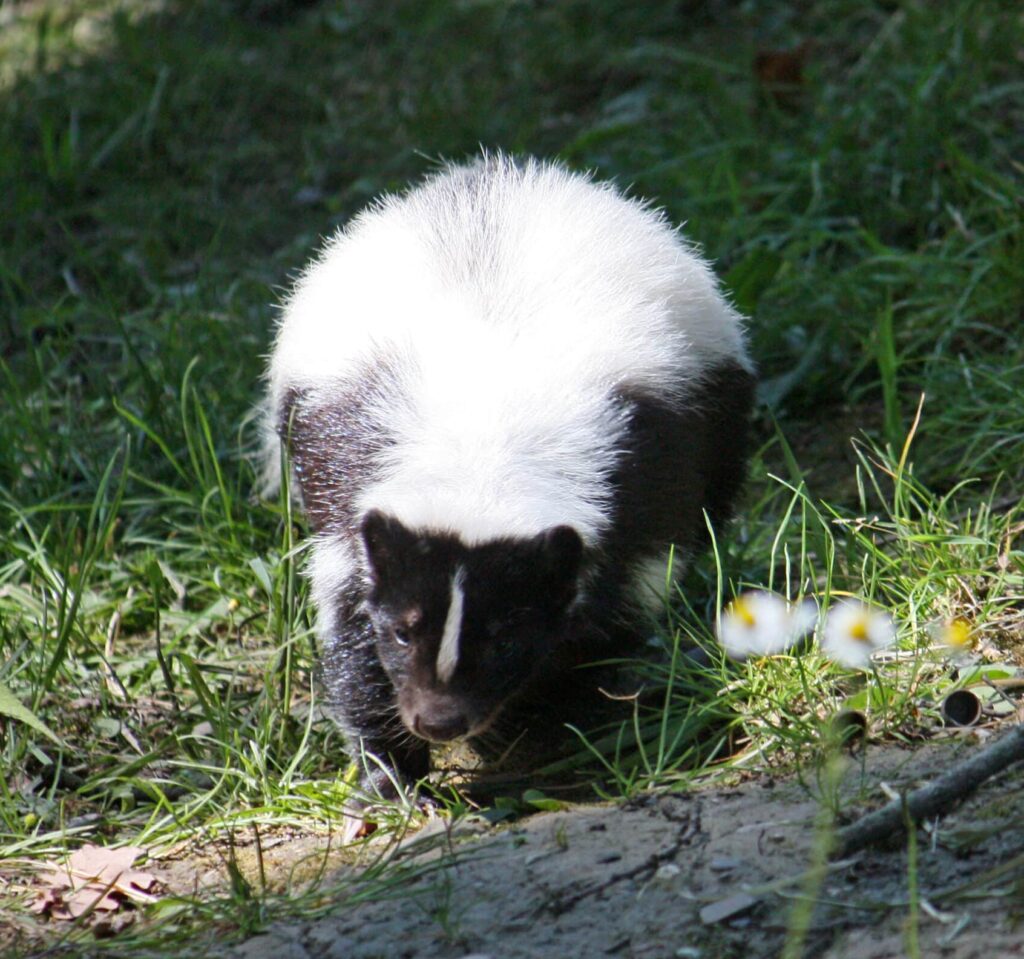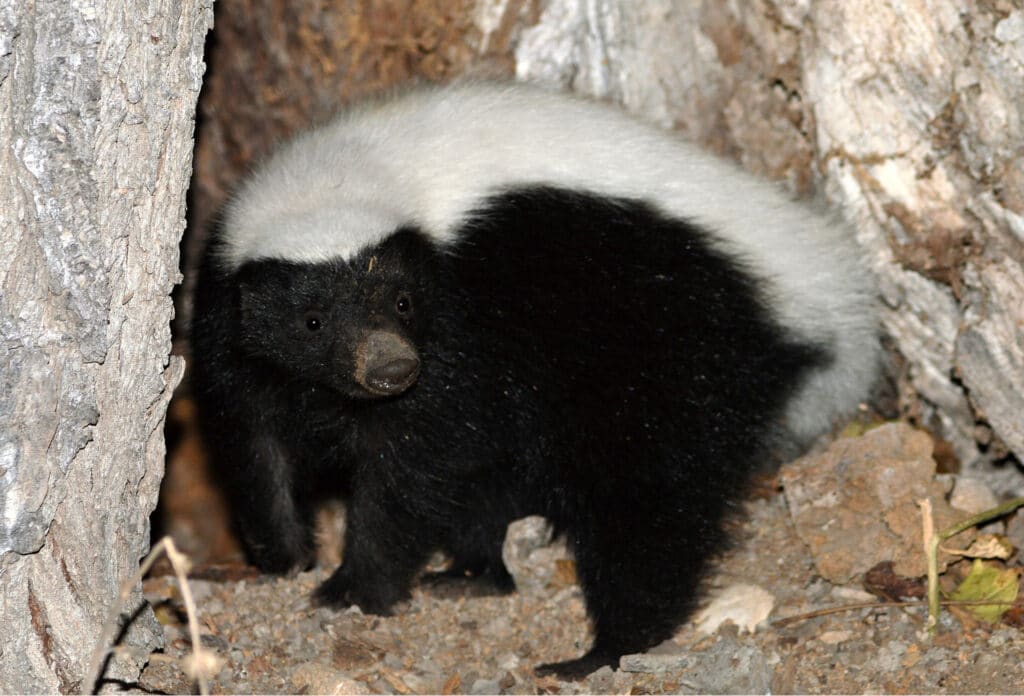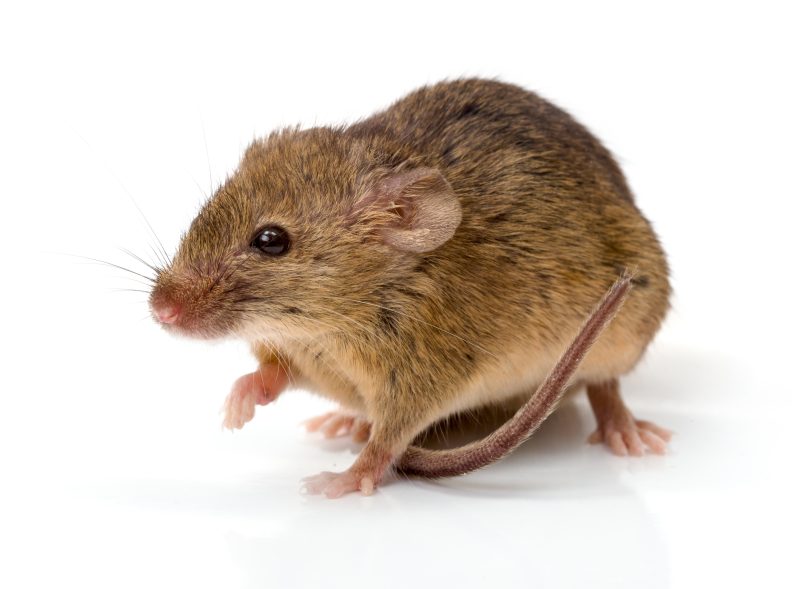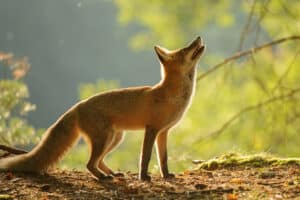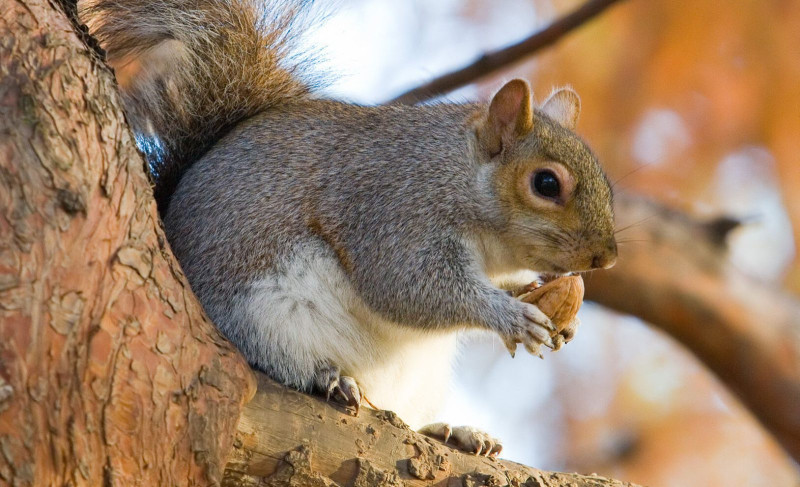There are three groups of skunks. Each of the species shown is in of those groups and inhabits the U.S. All are known for their black body, white markings, and noxious spray—which we rightfully fear. But this may surprise you: it’s a good thing when skunks visit our yards at night because they’re doing the beneficial work of helping to reduce populations of rodents and other pests. Although primarily nocturnal, you might occasionally see one foraging in the daytime, too.
Be sure to carry a light at night when walking in unlit areas. If you see one, just slowly back away. That’s it. The risk of being sprayed comes from when they’re startled or their warnings are ignored. If they know you’re there, they’ll hiss, lunge forward, and stomp their feet, which means “step back.” Do that, and they’ll go on their way.
Temperamentally, skunks are peaceful and non-aggressive. And they don’t like having to spray because when they do, they’re giving up their most effective means of defense. They carry enough musk for five or six sprays, but it takes eight to ten days to replenish it, a long time to go without protection from predators. Skunks can emit musk just a few days after they’re born and can spray about a month after that, but accuracy comes with age.
Skunk musk isn’t stinky urine. It’s an oily, sticky sulfur compound formed in their two anal glands. They can spray it with great accuracy up to ten feet (3 m) or more. For you chemistry students, the chemical composition of some of the stinky musk compounds is shown here.
STRIPED SKUNK (Mephitis mephitis)
There are twelve subspecies of the Striped Skunk. They’re probably the best-known of all skunks because they’re found across the U.S., in southern Canada, and in northern Mexico. They can be identified by two thin, white stripes running along the back and a thin, white strip on the head. Like other skunk species, they can direct their spray with great accuracy. They weigh between 4.0 and 9.9 pounds (1.8–4.5 kg), about the size of an average house cat. Mating season is from mid-February to mid-April, with an average of five or six kits born mid-May to early June.
SPOTTED SKUNKS
There are four species of spotted skunks, two of which inhabit the U.S.: the Western Spotted Skunk, Spilogale gracilis, and the Eastern Spotted Skunk, Spilogale putorius.
The Western Spotted has a black weasel-like body with broken white stripes on its back and a black-tipped tail. It’s tiny, with males weighing only 11.9 to 25.9 ounces (336-734 g) and females about the size of a tree squirrel. They inhabit the western U.S., northern Mexico, and British Columbia in rocky and brushy areas, favoring bluffs and outcroppings for their dens. Litter size can vary, but typically five or six kits are born in April and May, even though their breeding season occurred seven months earlier, from September to October. If that seems like an unusually long gestation, it is. The embryos remain at an early developmental stage (just a few cells) for about two hundred days before implanting in the mother’s uterus.
The Eastern Spotted Skunk resembles the Western Spotted, except for wider white stripes on the back and a white tip on the tail. It inhabits central and southeastern parts of the U.S. and small areas of Canada and northeast Mexico but is seen less often. Small like the Western Spotted, it’s about the size of a large tree squirrel. Unlike the unusual gestational period of the Western Spotted, it breeds in March or April and gives birth in late May or early June, with usually five to six in a litter.
HOODED SKUNK (Mephitis macroura)
There are four subspecies of Hooded Skunks. Only one, the Northern Hooded Skunk, Mephitis macroura milleri, inhabits the U.S. In the same genus as Striped Skunks, it looks similar, except the tail and hair are longer and softer (not that we’re likely to be touching it!). White fur around its neck gives rise to its name. It ranges in size from 0.9 to 5.9 pounds (0.4–2.7 kg). Elusive and not often seen, it inhabits the U.S. Southwest down to Mexico and beyond and tends to live near water in grasslands, deserts, and the foothills of mountains. It’s also seen in suburban areas where there are pastures and farmland. It mainly eats vegetation but also consumes insects, fruit, small animals, and garbage. Mating for them is late February to March, with usually four kits born in early May to June.
American Hog-nosed Skunk (Conepatus leuconotus)
There are four hog-nosed skunk species, but only one inhabits the U.S. It’s the American Hog-nosed Skunk which is found from southern Colorado to Central America. One of the largest of all skunks, it weighs from 2.49 to 9.92 pounds (1.1–4.5 kg). Primarily found along streams in rocky terrain and canyons, they’ve also been spotted in Texas in pastures, mesquite brushlands, and native grasslands. They’re omnivorous, primarily eating insects and vegetation, but will also eat carrion, small reptiles, berries, and prickly pear cactus. They have a single white stripe running the full length of their back and tail. Powerful front legs with long claws are used to dig into the ground for insects. A relatively long snout and bare nose gave rise to their name.
All about Striped Skunks
How to get skunk spray off your pet
Proper rescue, care for orphaned or injured wildlife


